Key in a search term below to search our website.
Key in a search term below to search our website.
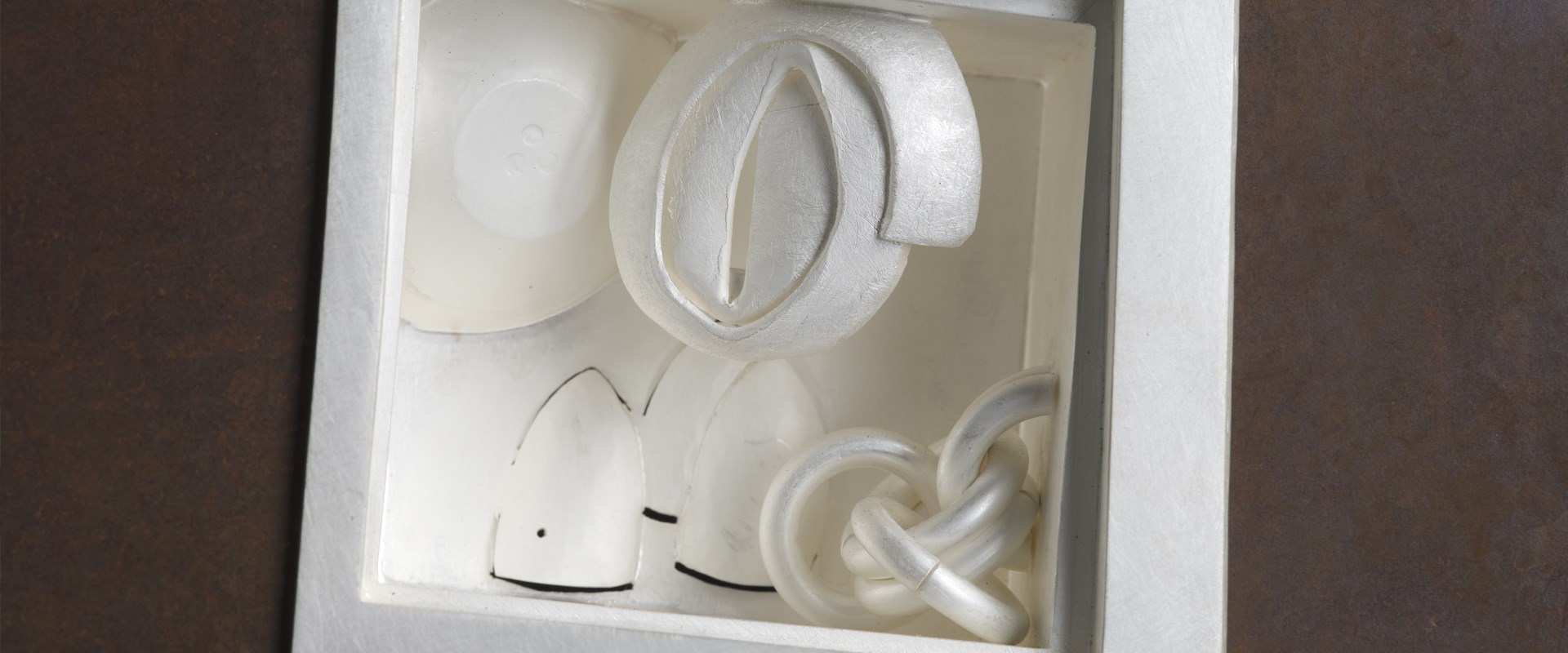
In 2018, the internationally renowned metalsmith Simone ten Hompel was commissioned by National Museums Scotland and The Glenmorangie Company to create a new artwork inspired by our curatorial research and the Museum’s collection of metal artefacts from early medieval Scotland.
The resulting artwork, coordinate explores Scotland’s journey through time – its changing landscape and the continual rediscovery of its past. It represents an abstracted interpretation of Scotland’s landmass, one which can be explored from all sides.
Drag to spin the 360 degree image below:
“This piece is about landscape. I wanted to give it a sense of location, to see Scotland in a 360 degree view. My research of the Museum’s collections combined with my travel to the Highlands aroused my curiosity and I wanted to develop an understanding of how a land like Scotland works and to get under its skin.- Simone ten Hompel
A metalsmith for over 45 years, Simone ten Hompel is one of the foremost craft artists and educators working in Britain. She is admired for her metalwork and sculptures which challenge how we see domestic objects.
She sees metal as her first language, strongly believing that true understanding of any craft must come through the experience of making. Over an illustrious career she has earned a reputation as one of the most inventive silversmiths of her generation.
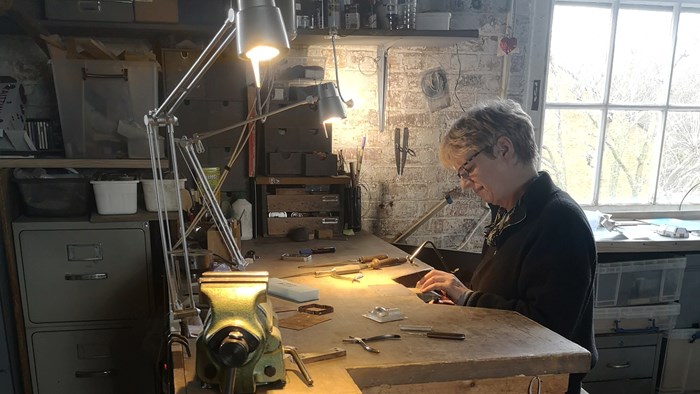
Simone ten Hompel at her workbench, London, 2020.
Over a period of six months, Simone ten Hompel worked with our archaeology curators, visiting the Museum and its collections, and travelling across Scotland to understand its history and unique landscapes. At the Museum our curators introduced Simone to metal artefacts that had been created or brought to Scotland during the early medieval period.
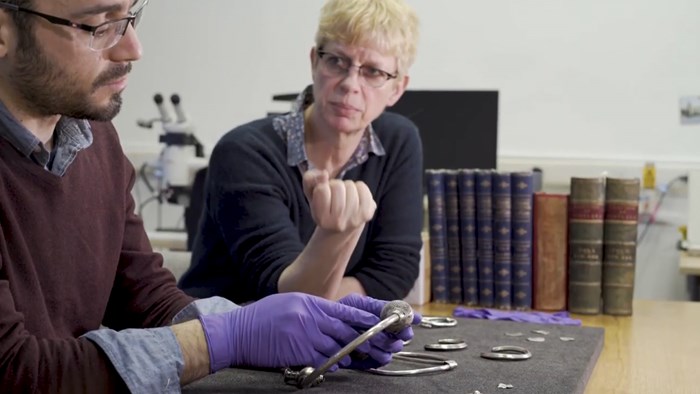
Simone with Glenmorangie Fellow Adrián Maldonado examining Viking-age silver.
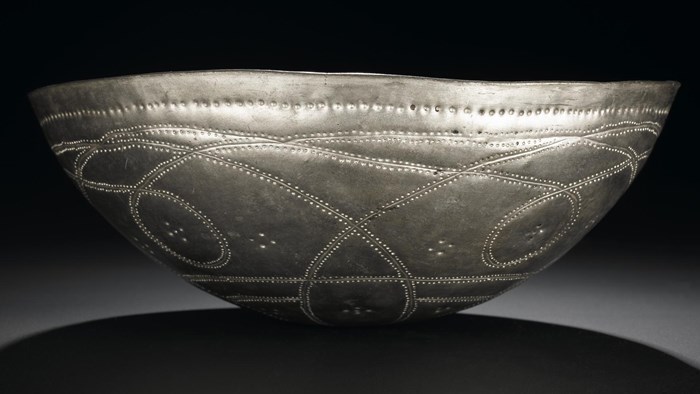
Silver bowl with pointillé design, from St Ninian’s Isle, Shetland, AD 800.
Simone was fascinated by the different colours and textures of silver in the St Ninian’s Isle Hoard. By AD 800 when these bowls were made, the supply of silver to Scotland had dwindled, and Pictish smiths stretched the metal to its limit. Some of the silver bowls look yellow from alloying with gold, while others have the distinctive green patina of copper.
Simone explored the colours and textures of metals other than silver which were important to metalsmiths during this period. This Viking sword was found in Gorton, Moray, deep in what was formerly Pictish land. Iron and steel were expertly pattern-welded to create a distinctive pattern on the blade. The corroded iron of the hilt contrasts with the white and red of inlaid silver and copper wire.
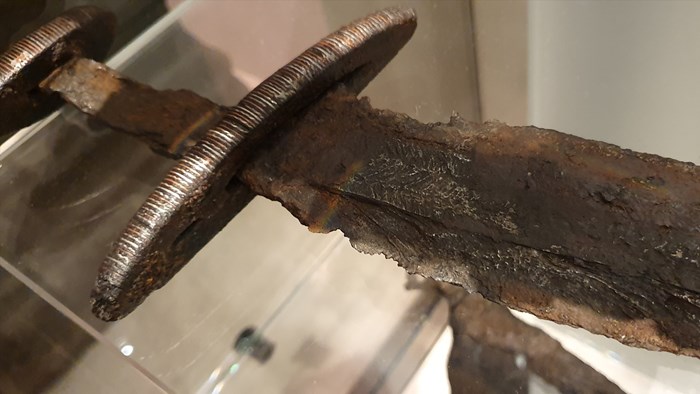
Viking-age iron sword from Gorton, Moray, 9 -11th century AD.
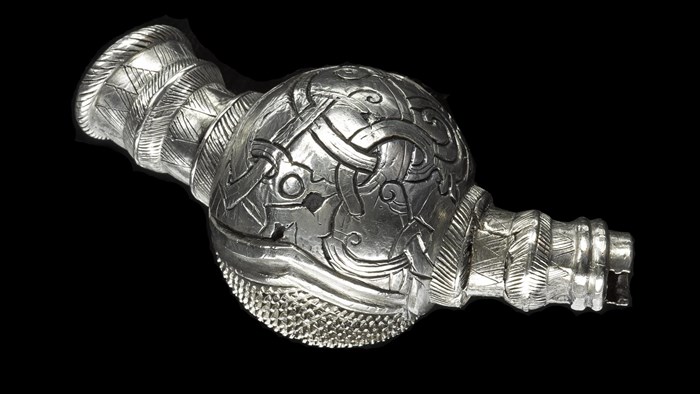
Terminal of a silver thistle brooch from the Skaill Hoard, Orkney, 10th century AD.
This fine terminal of a thistle brooch is one of over one hundred silver fragments from a 10th-century hoard found in the sand dunes of Orkney. Like Simone’s work, the object rewards close inspection and changes in appearance when viewed from different angles.
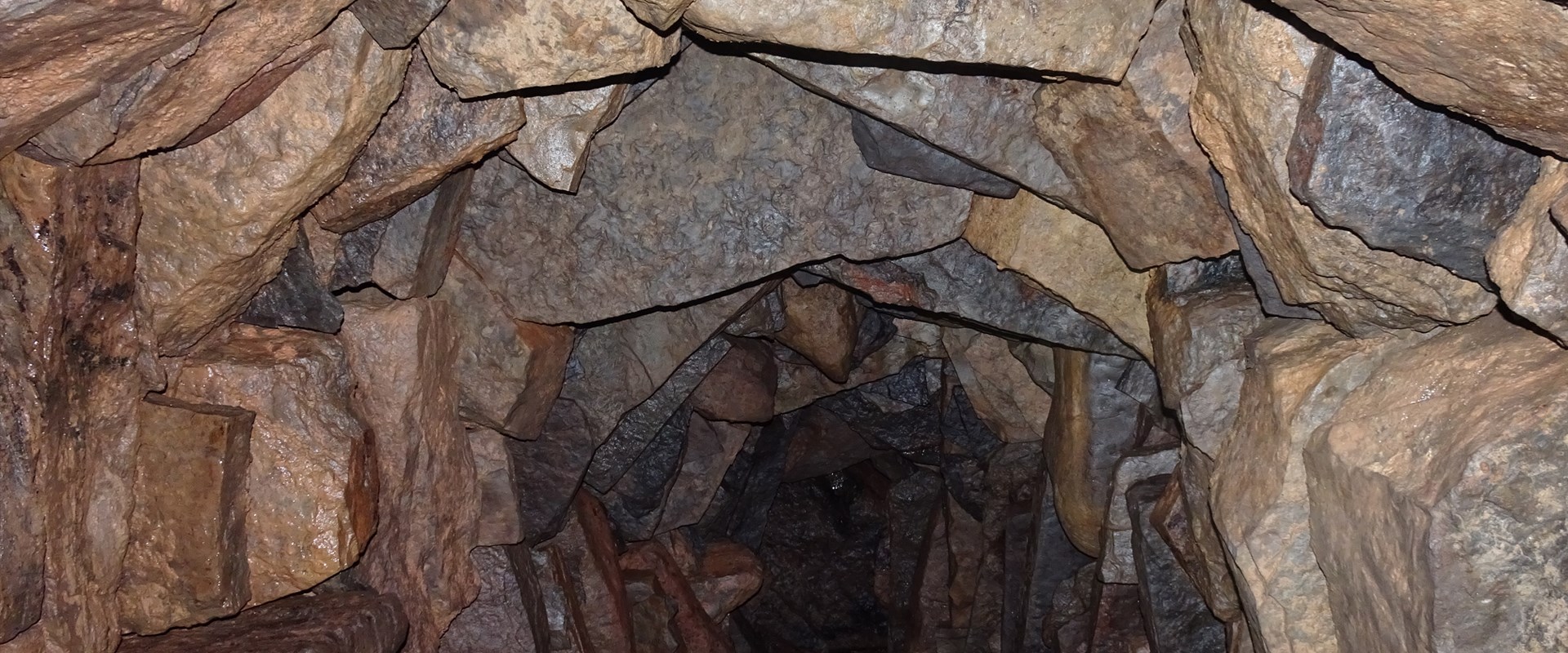
The title of the piece, coordinate, refers both to Simone ten Hompel's time as an outsider getting her bearings in Scotland, as well as finding her way around the museum building itself. It also invokes the collaboration between the worlds of craft, design, archaeology and museum practice.
The hidden compartments of coordinate evoke the chance discoveries of silver objects buried in the ground. Seemingly untouched by time, they reach out from the ancient past to speak to us today.
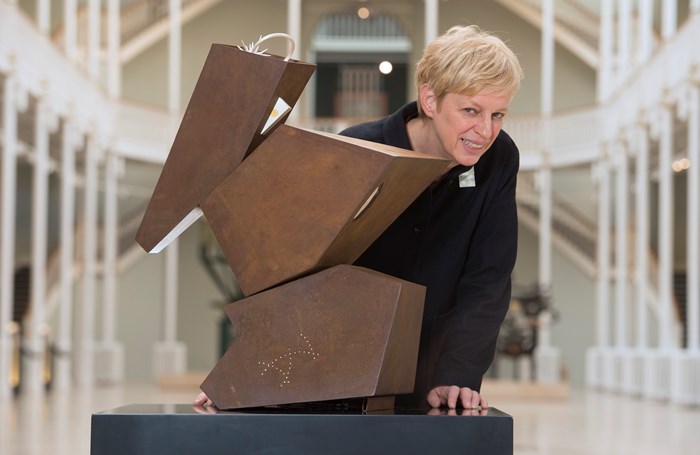
Simone ten Hompel pictured with the Glenmorangie Commission at the National Museum of Scotland © Neil Hanna Photography
coordinate features a few subtle nods to early medieval metal artefacts on display in the Museum. The window on the lowest element of the piece invokes her feeling of initially looking at the silver through its glass showcase. The shapes and forms derive from elements of Pictish silver including the St Ninian’s Isle Hoard and silver chains from the Traprain Law Hoard.
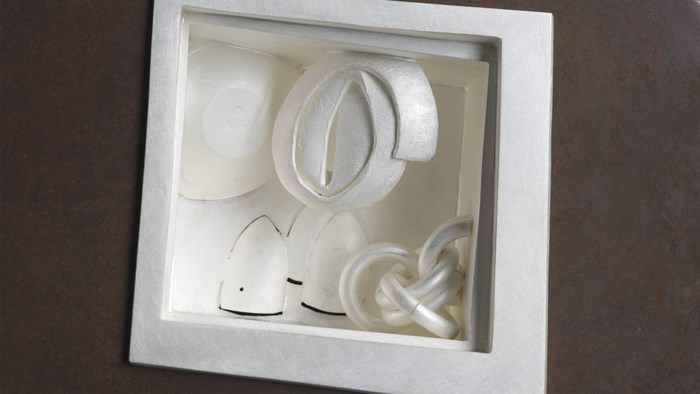
The pattern of silver inlaid into corten steel on the base of the coordinate artwork was inspired by the pointillé design of the silver bowls in the St Ninian’s Isle Hoard.
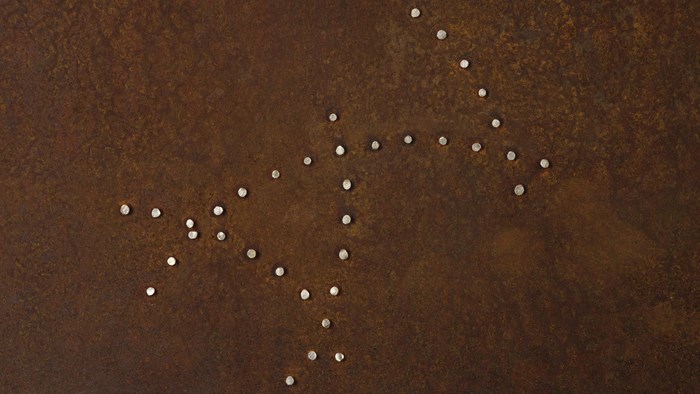
Simone’s research led her north to Orkney, where she met archaeological experts and visited the sites where many of our Viking-age objects were excavated. This silver section relates to her experience of descending into Mine Howe, an ancient site of metalworking. Simone intended for viewers to walk around the piece and be tempted to peer into it, imagining what you might find inside.
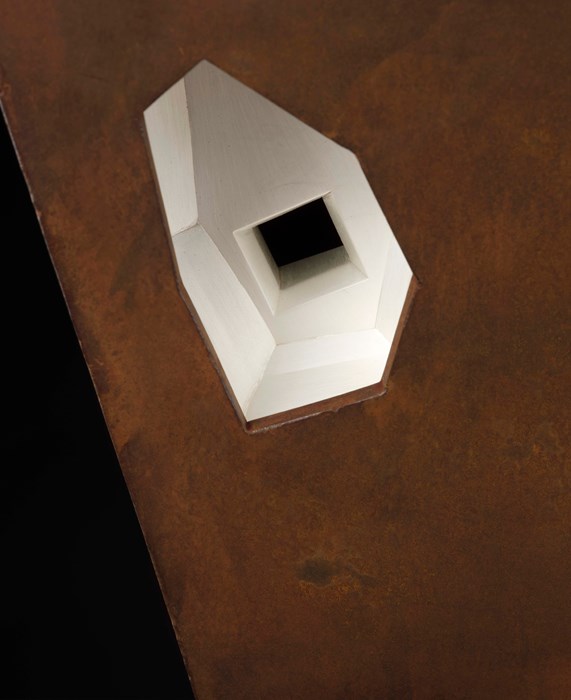
The silver facet that emerges from the side of the top element, is roughly the location of Tain on the map of Scotland. The shape of the facet evokes a section of the Hilton of Cadboll Stone, the first inspiration for the Glenmorangie Research Project. The golden orb is the dram of whisky she shared with the judges on her visit.
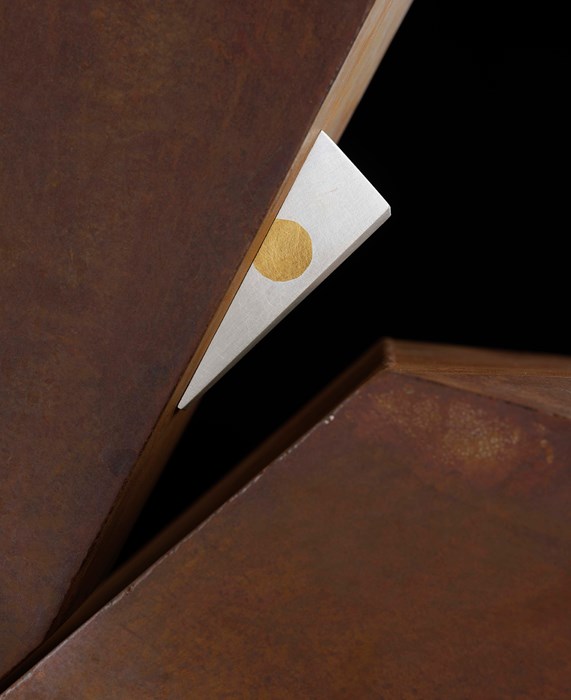
This silver piece on top of the coordinate artwork is an abstract version of the hoop and terminal of a thistle brooch from the Skaill Hoard. This stood out as a particular inspiration to Simone on her first visit to our collections.
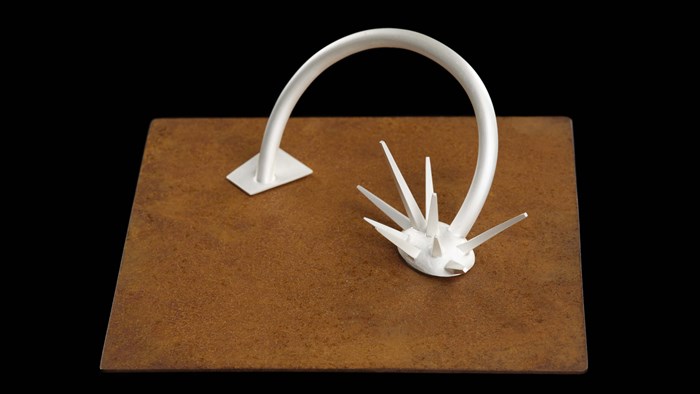
Date:
2020
Made by:
Made from:
Silver, corten steel, guiding metal, stainless steel
Made in:
England
On display:
Making and Creating, Level 3, National Museum of Scotland
The latest phase of the Glenmorangie Research Project looks at the 9th to 12th centuries, an era of rapid change, political instability and cultural diversity, out of which the Scottish nation was born. To mark the tenth year of the partnership, we launched the Glenmorangie Commission, in which a leading maker in metal was selected to create a new piece of contemporary artwork inspired by research with curators in archaeology.
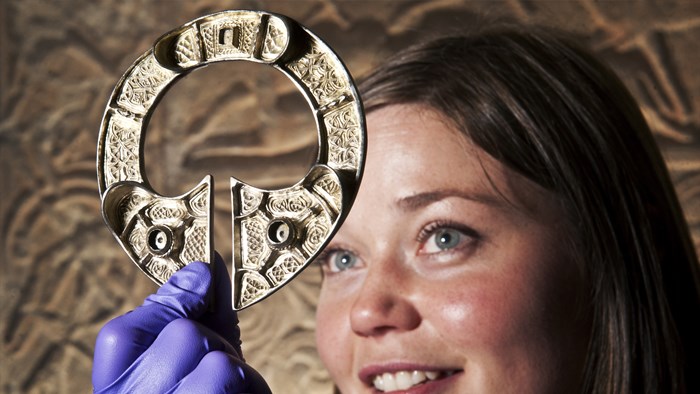
Curator Alice Blackwell and a silver brooch from the St Ninian’s Isle Hoard.
Since 2008, National Museums Scotland has been working in partnership with The Glenmorangie Company to support a creative approach to new research into Scotland’s early medieval past. Often, we only have fragments of objects left to tell the story of everyday life in ancient times. The Glenmorangie Research Project has allowed archaeology curators to explore these artefacts from the perspective of the people who made them, used them, and who left them behind.
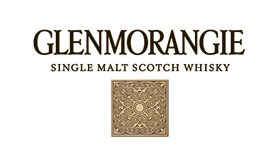
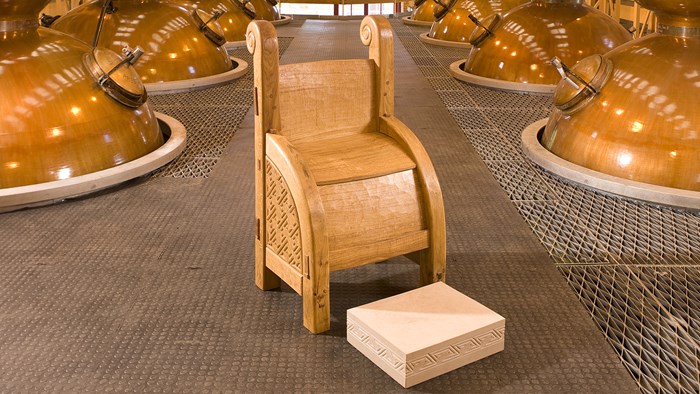
A recreation of a Pictish wooden throne by Adrian McCurdy made in 2010.
For over a decade, the Glenmorangie Research Project has sponsored recreations of archaeological objects based on examples in our collections. By observing experts in working leather, wood, horn, bronze and silver, we get unparalleled insight into artisanal skills lost to the ages. Some of these items, such as the Pictish wooden throne known only from depictions in stone carvings, have become iconic objects in their own right.